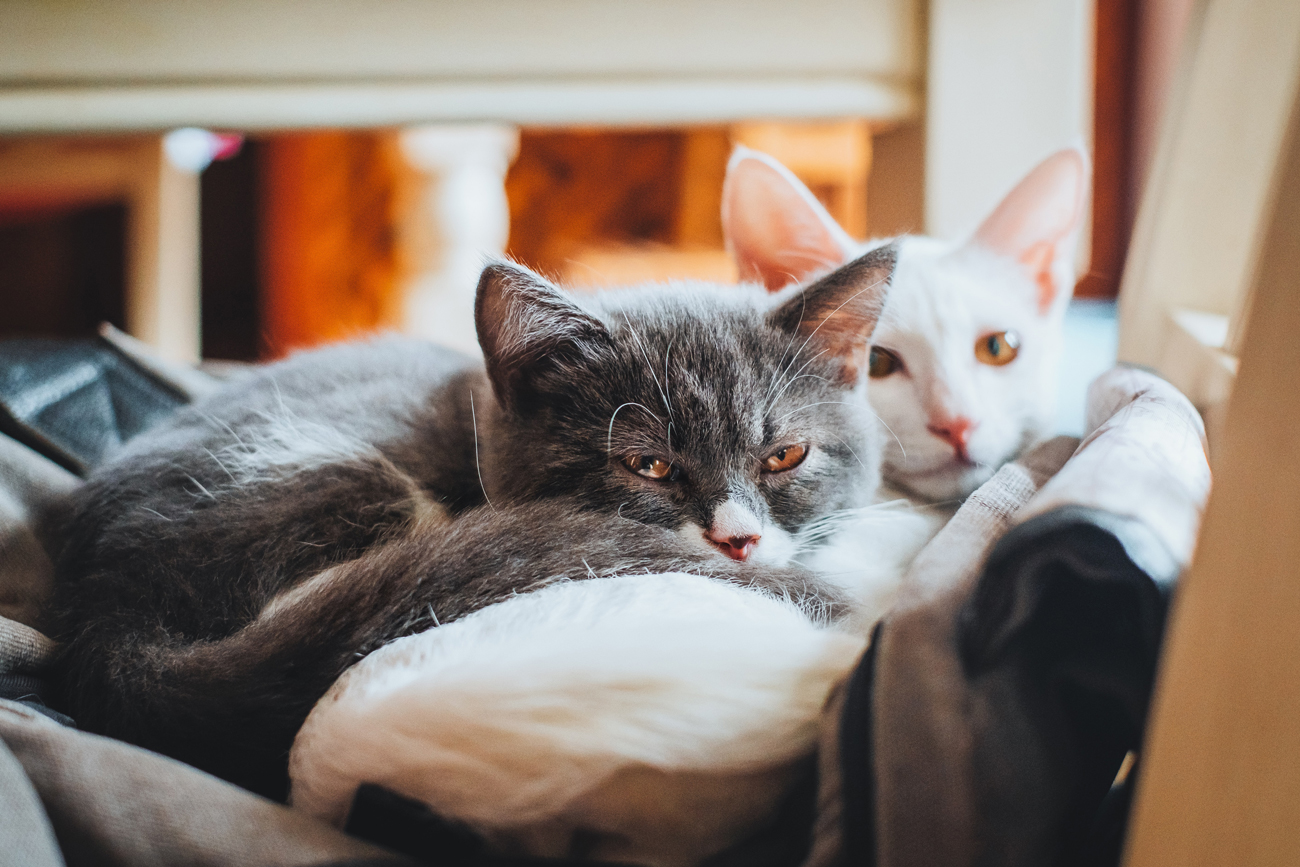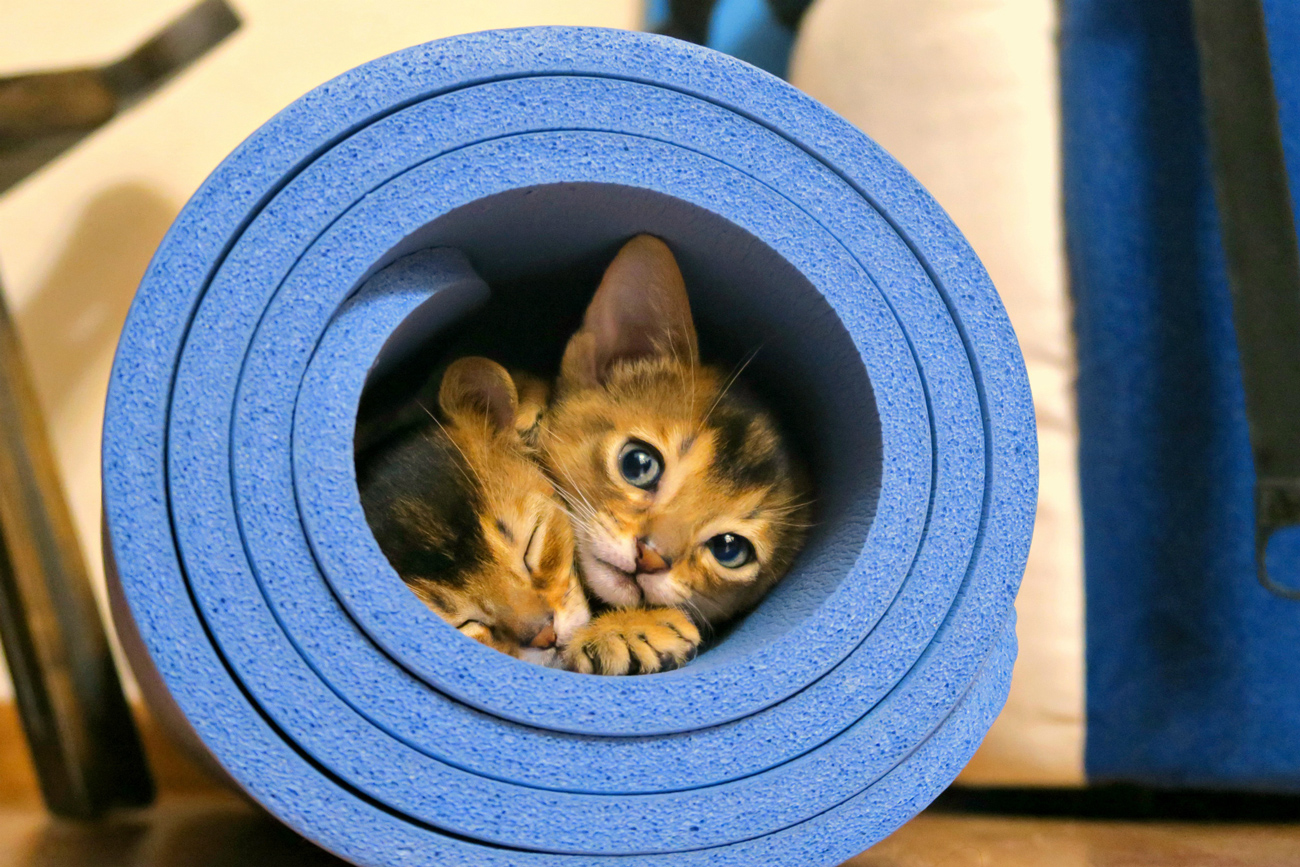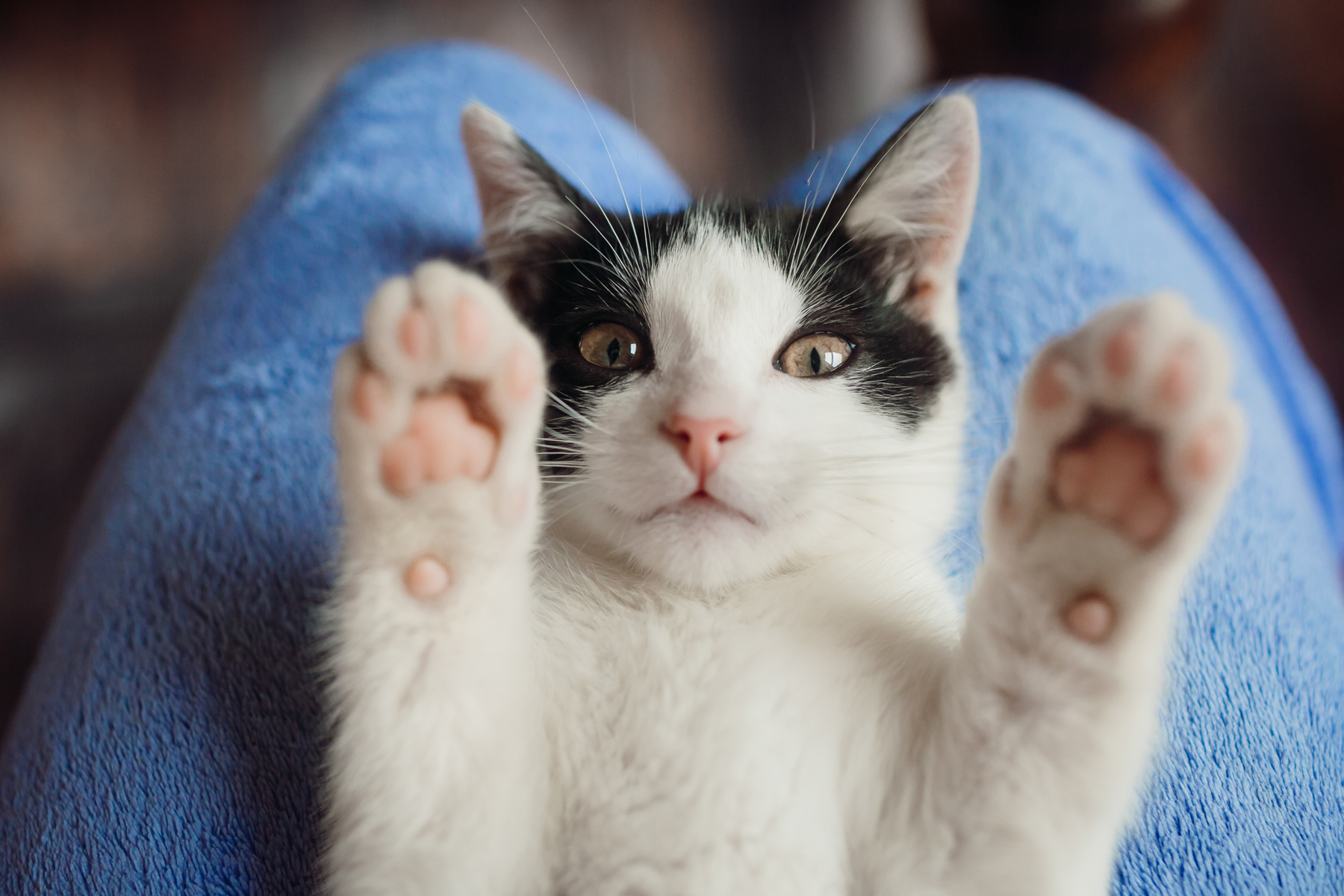
What is a ‘bonded pair’ of cats?
16th June, 2021
There’s nothing more adorable than the sight of two cats curled up together, one grooming the other.
Bonded pairs are friends for life. As kittens, they’re fun-loving playmates. In their later years, they’re often happier and healthier than single cats, though it’s a good idea to get insurance for older cats, too.
So how can you tell if your two cats are bonded? And if you have one moggy and are thinking of getting another, what can you do to help them form that very special connection?
Bonded pairs: younger cats
Most bonded pairs are litter mates, so they’ve known each other all their lives. Animal shelters will often ask you to adopt them as a pair, as otherwise each one will pine for the other.
It also has advantages for you, the owner. There’s less worry about leaving your fur-babies for long periods at home, as they’ve got company. While cats do like plenty of alone-time, they are surprisingly sociable creatures underneath their haughty exteriors!
Also, young pairs learn from one another. A single cat may not remember it’s not supposed to scratch your furniture – or might choose to forget! But when it sees its other half using a scratch mat, it’s likely to follow suit.
Your dynamic duo will also explore the world together, discovering their territory and helping defend it from feline foes!
Of course, they still need you to provide them with a caring, secure home. Even though they enjoy grooming one another, intertwining their tails, and rubbing their faces together, they’ve still got plenty of love for you.

Bonded pairs: older cats
Being bonded doesn’t mean your cats have the same personality. As they leave the kitten stage behind, you’ll start really noticing their differences.
Perhaps one is bouncy and inquisitive, while the other is aloof and sedate. As they get older, they might well spend more time doing their own things – while still cuddling up once in a while.
Each bonded pair develops its own dynamic: one might be more dominant, or they might both be equal.
As they mature, your senior bonded pair will settle into companionship. There will be less manic playing, and more side-by-side snoozing.
They’ll continue to support one another through life changes: the arrival of a new cat in the neighbourhood, or perhaps a house move.
And if one of the pair gets ill, the other will try to provide comfort. It’s a heart-warming sight – but you still need to take action yourself. With insurance for an older cat from Petwise, you get access to a 24-Hour Vet Helpline for any concerns.
Double the trouble?
There are some drawbacks to having two kitties. So in what ways can a bonded pair of cats be double trouble?
You’ll need to provide twice as much food, though hopefully they’ll agree on what they like to eat!
You’ll have to pay for double the healthcare. As they age, this cost could start to mount – older cat insurance will help you cover vet fees.
You might think you can get away with supplying just one litter tray or other equipment. But in fact, that can create tension, particularly if your cats have very different personalities. So it’s wise to ensure separate food bowls, sleeping spots and so on.
Keep an eye on them to make sure that one cat isn’t bullying the other, and take action if they hiss at one another or even start to fight.
It’s rare between bonded cats, but everyone needs space from time to time! They should make friends again pretty quickly.

Introducing a new cat
Cats can become bonded even if they meet later on – especially if you take care with introductions.
Before allowing them to meet, stroke one – then go to the second cat and stroke that one without washing your hands first. Swap the process around a few times, so that each cat gets to know the other’s scent.
Choose a quiet time so your cats can meet under relaxing circumstances. Keep one in a crate or put them either side of a child stair gate so that they can’t fight. It’s best if each can walk away from the other if they find the meeting too stressful.
After a few days, let them mingle briefly, but be prepared to separate them if either one hisses, cowers, or shows other signs of unease.
Gradually let them spend more time together, but make sure they each have a safe space where they can retreat. Reinforce any positive signs with lots of strokes and treats.
With time, some cats will become bonded, while others will simply learn to co-exist.
Bereaved bonded cats
When one of your cats dies, it won’t be just you who mourns its passing: its bonded partner will be grief-stricken, too.
Each cat reacts in a different way when it’s missing its companion. Some might lose their appetite and become lethargic. Others might be clingier and more vocal. Still others show few outward signs. These behavioural changes can be over in days, or last several months.
You can help your cat with lots of cuddles, attention and play. Unless your surviving cat seems bothered by its missing mate’s scent, it’s best not to remove or wash its items, but instead let the smell fade naturally.
Don’t buy a new pet straight away: this just adds stress at a difficult time.
It’s easy to confuse some signs of grief with symptoms of serious illnesses. If you’re concerned, get your mourning moggy checked out by your vet.
Senior cat insurance will help cover the costs if your pet requires long-term treatment.

Get a quote from Petwise today
At Petwise, we want to help you care for your cats throughout their lives. We provide older cat insurance for moggies aged seven upwards, with no upper age limit.
We offer seven levels of cover to suit your budget and your cats’ needs. Benefits include vets’ fees up to £10,000, depending on your policy; dental cover as standard; and a friendly UK-based team.
Get a quote today.
Policy benefits, features and discounts offered may very between insurance schemes or cover selected and are subject to underwriting criteria. Information contained within this article is accurate at the time of publishing but may be subject to change.